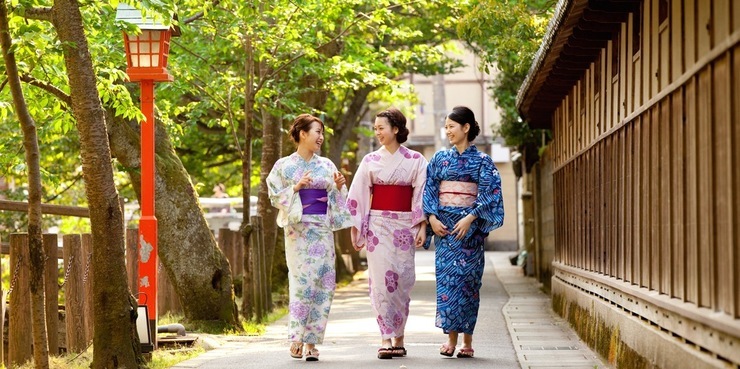japan guide by Remoju
Japanese Summer Clothes - Yukata
Reported by Lachy
The Summer "Kimono" - Beautiful and Surprisingly Practical !

The yukata is a piece of traditional Japanese clothing, often likened to being a ”summer kimono”. While literally meaning “bathing clothes”, it is entirely normal to see people walking around the streets wearing their beautiful yukata during the scorching hot summer months, and especially during festivals and fireworks shows. A staple of all ryokans (Japanese style inns), and becoming increasingly common in standard hotels as well in recent years, there is nothing quite like having a nap in a yukata on tatami bamboo mat floors, or a good night's rest in a clean,soft yukata. Although the yukata shares many similarities in appearance to the kimono, the single cotton layer of the yukata makes it the lighter and more breathable of the two, especially considering the many thick, silk layers of the more famous kimono.

Men’s and Women’s
While men’s yukata are traditionally much more plain in design and featuring darker, more mature colors, while women’s yukata, particularly those worn by young women have much brighter and more decorative coloration, such as pinks and yellows, and many include floral designs. The yukata is often seen as a symbol of summer, along with fireworks, the incessant crying of the cicada, and the beautiful ocean.

.png)

.png)
How Do I Wear This Thing?
Like with all things in Japanese culture, there is a specific way in which one must wear their yukata, as wearing it incorrectly is a tad more than a fashion faux pas. The yukata, like most all traditional Japanese clothing (wafuku), must be worn with the left side over the right, this is because in Japan, corpses are dressed with the right side on top!
Getting the Most Mileage Out of Your Yen
My own yukata isn’t the fanciest of yukatas, but it is very comfortable (especially for sleeping), and has nice deep navy blues and an interesting design in the form of shogi (a Japanese board game similar to chess) pieces, including the shogun! I bought it in Kyoto during the Gion festival of 2013, and was quite the steal! Only costing 6000 yen for the robe and obi belt (around $60 AUD), and an extra 3000 (roughly $30) for traditional wooden geta sandals, it was well worth the money! I later bought a cheaper pair of geta, this time with flat rubber bottoms due to the difficulty I had walking/running in the traditionally styled sandals. I’ve easily gotten four years of use out of my yukata, wearing it to tanabata festivals, boat parties, to sleep in and to have ten too many drinks in, and it’s still in great condition, despite not even being top of the range!
.png)
.png)
